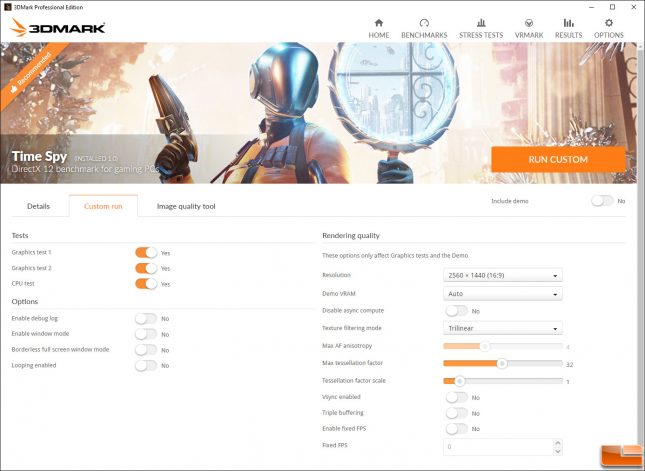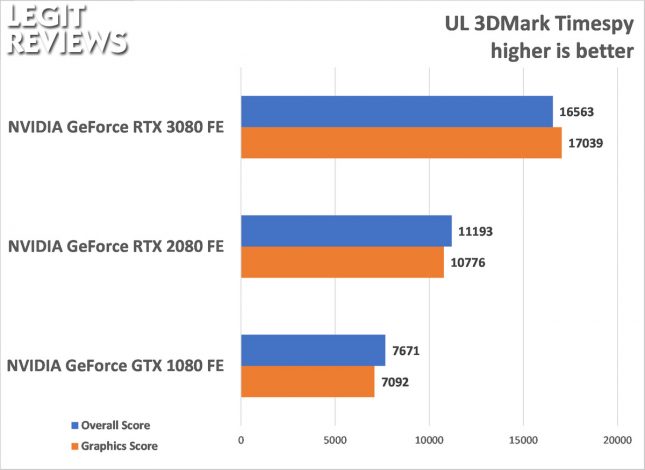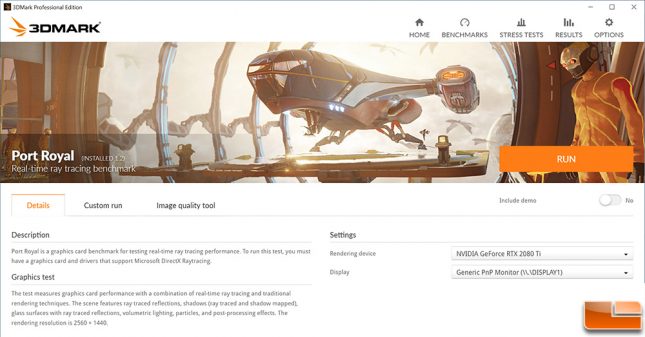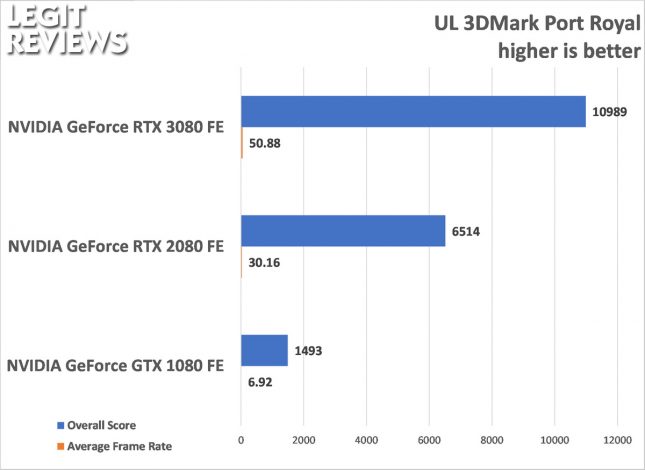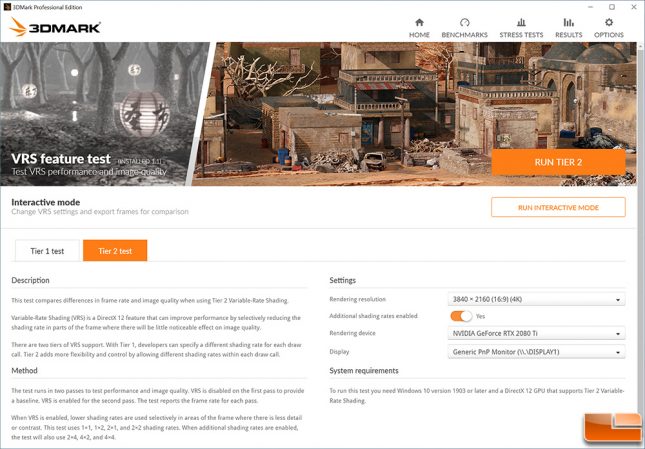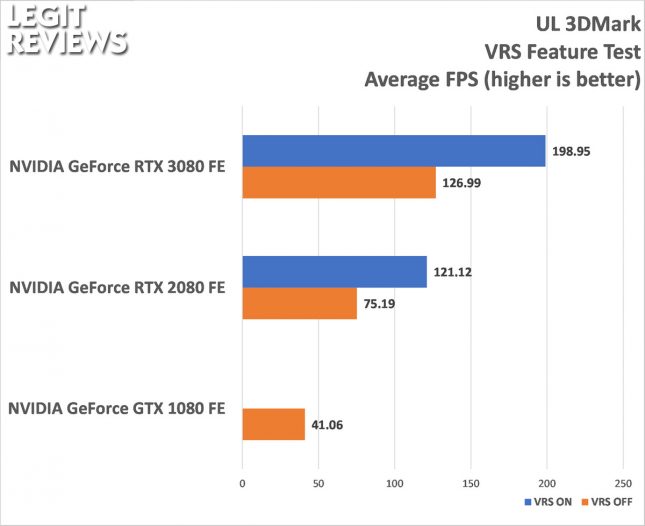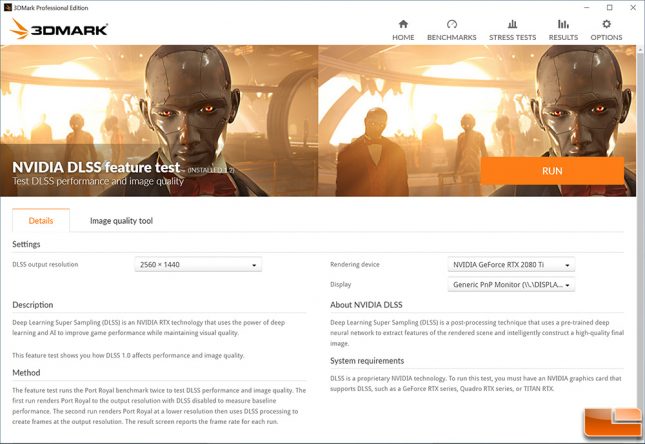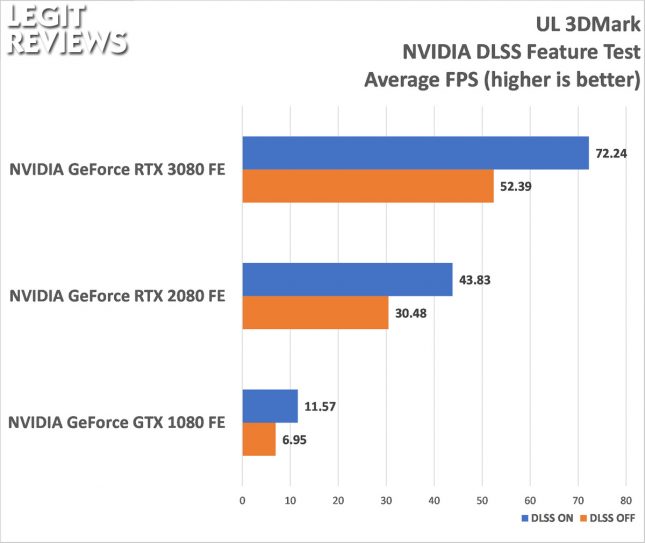NVIDIA GeForce RTX 3080 FE Video Card Review – Ampere
3DMark Tests Galore!
3DMark Time Spy has been our primary DirectX 12 benchmark test for gaming PCs running Windows 10 for years. This DirectX 12 Feature Level 11_0 benchmark utilizes a pure DirectX 12 game engine that supports features like asynchronous compute, explicit multi-adapter, and multi-threading! The developers opted to use DirectX 12 Feature Level 11_0 to ensure wide compatibility with DirectX 11 hardware through DirectX 12 drivers.
We ran 3DMark Time Spy with the standard settings and got the following results:
3DMark Time Spy shows the GeForce RTX 3080 FE is about 50% faster than the RTX 2080 FE and over 2x faster than the GeForce GTX 1080 FE.
3DMark Port Royal entered the market in 2019 as the worlds first dedicated real-time ray tracing benchmark for gamers. We’ve never included this benchmark before, but now that NVIDIA has more than one generation of cards on the market that have hardware support for real-time ray tracing performance, it was time to include it in our testing. We ran the default test without the demo.
The results were impressive as the NVIDIA GeForce RTX 3080 had nearly a 70% higher average frame rate over the NVIDIA GeForce RTX 2080! It also happens to be nearly 7.5x faster than the NVIDIA GeForce GTX 1080 that came out back in 2016, so it just goes to show that in some areas the new Ampere based cards will run circles around Turing and Pascal based cards.
The Variable-Rate Shading (VRS) Benchmark feature test in 3DMark got updated at the end of 2019 and now includes a Tier 2. Tier 2 adds more flexibility and control by allowing different shading rates within each draw call. Right now this test will only run on NVIDIA Turing and Ampere GPUs.
We again saw nearly a 69% performance improvement with the new NVIDIA GeForce RTX 3080 FE over the NVIDIA GeForce RTX 2080 FE with VRS on. With the feature turned off, the RTX 3080 enjoyed a slightly smaller lead of just over 64%.
Another new benchmark added by UL to 3DMark in 2019 was the NVIDIA DLSS feature test. This new test helps you compare performance and image quality with and without DLSS processing. The test is based on the 3DMark Port Royal ray tracing benchmark that uses Temporal Anti-Aliasing. TAA usage can result in blurring and the loss of fine detail and that can be regained by the NVIDIA RTX technology called DLSS (Deep Learning Super Sampling). DLSS uses deep learning and AI to improve game performance while maintaining visual quality.
With DLSS turned on the GeForce RTX 3080 was nearly 65% faster than the RTX 3080 and with the feature turned off it was 72% faster.

